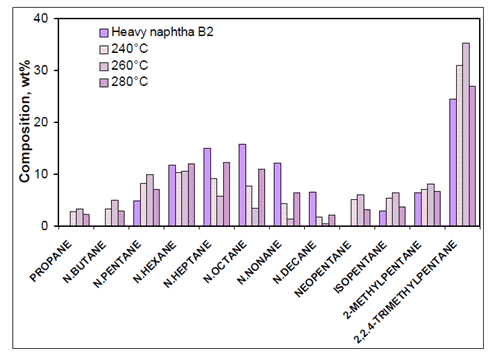Prime C
Defender of Dank
Supporter
- 4,285
- 263
Monday, October 7, 2013
Alcohol or Naphtha
Full Extract Cannabis Oil, the healer of disease, the Kryptonite to Cancers, the holy grail of natural medicine. This substance is highly revered by many and made by few; it is a form of rebellion to take to the calling of oil alchemy due to its high illegality globally.
http://i1004.invalid.com/albums/af169/capturetheflag/FullExtractCannabisOil.jpg
There are many oil artisans in the modern U.S. Cannabis community; each maker has their own beliefs, processes and end results. Some oil producers believe whole-heartedly in the classical process of using ethanol alcohol to extract botanical essential oils. Others believe in using Naphtha as a solvent, as the most well-known purveyor of this oil chose Naphtha as his choice in solvents. There is many how to videos to be found on the web, and one quickly finds that many of these videos may not necessarily be of sound advice or method.To gain a better understanding of how Full Extract Cannabis oil is made, please visit the links below. This will help you understand the processes used to make a highly medicinal Cannabis extract oil.
How To Make Cannabis Oil-
Cure Your Own Cancer-
When our family turned to the oil to fight childhood cancer (T-Cell ALL) we found ourselves with the same solvent choice to be made: Naphtha or Ethanol? I poured over many articles and research projects on each method, asking many questions to people who were more experienced than I, professionals, chemists, lab analysts, oil makers and even a couple of doctors. Through all of my research and discovery I came to a conclusion. Before I share my conclusion, let’s look at what I learned:
What is a hydrocarbon?
This is the basic Wikipedia definition of a hydrocarbon:
“In organic chemistry, a hydrocarbon is an organic compound consisting entirely of hydrogen and carbon. Hydrocarbons from which one hydrogen atom has been removed are functional groups, called hydrocarbyls. Aromatic hydrocarbons (arenes), alkanes, alkenes, cycloalkanes and alkyne-based compounds are different types of hydrocarbons.The majority of hydrocarbons found on earth naturally occur in crude oil, where decomposed organic matter provides an abundance of carbon and hydrogen which, when bonded, can catenate to form seemingly limitless chains.”
When it comes to Hydrocarbons, the simplest and most relatively non-toxic hydrocarbons are straight chain or Alkanes. GRAS (Generally regarded as safe) alkanes (mostly non-toxic) are: Methane CH4, Ethane C2H6, Propane C3H8, n-butane C4H10, n-pentane C5H12 and n-hexane C6H14.
· Methane [1C] and ethane [2C] are gaseous at ambient temperatures and cannot be liquefied by pressure alone.
· Propane [3C] is however easily liquefied, and exists in 'propane bottles' mostly as a liquid.
· Butane [4C] is so easily liquefied that it provides a safe, volatile fuel for small pocket lighters.
· Pentane [5C] is a clear liquid at room temperature, commonly used in chemistry and industry as a powerful nearly odorless solvent of waxes and high molecular weight organic compounds, including greases.
· Hexane [6C] is a broadly used non-polar, non-aromatic solvent, as well as a significant element in common gasoline.
· The [6C] through [10C] alkanes, alkenes and isomeric cycloalkanes are the top components of gasoline, naphtha, jet fuel and specialized industrial solvent mixtures.
· Propane [3C] is however easily liquefied, and exists in 'propane bottles' mostly as a liquid.
· Butane [4C] is so easily liquefied that it provides a safe, volatile fuel for small pocket lighters.
· Pentane [5C] is a clear liquid at room temperature, commonly used in chemistry and industry as a powerful nearly odorless solvent of waxes and high molecular weight organic compounds, including greases.
· Hexane [6C] is a broadly used non-polar, non-aromatic solvent, as well as a significant element in common gasoline.
· The [6C] through [10C] alkanes, alkenes and isomeric cycloalkanes are the top components of gasoline, naphtha, jet fuel and specialized industrial solvent mixtures.

I learned that Naphtha is a muddled combination of hydrocarbons derived from crude petroleum in the range of C4-C11. C11? This may sound confusing at first, but basically that means Naphtha can have any hydrocarbons rated from C4 (butane) to C11(Undecane)
When extracting Cannabis with a solvent, one must “boil-off” or cause the solvent precipitate out of the mixture using temperature and agitation.
For example, Butane has a boiling point of 30.2 deg F. This means that if you extracted cannabinoids with butane, it would precipitate out of the mixture after the temperature surpasses 30.2 degrees, leaving the extracted cannabinoids intact. THC has a boiling point of 314.6 deg F. this allows for the use of solvents in extractions that do not surpass the boiling point of 300 degrees. The last hydrocarbon with a boiling point of <300 deg is Octane (C8) at 257 deg F. Anything higher than a C8 hydrocarbon would not be allowed to precipitate out of the mixture without destroying the ultra-important Cannabinoids.
Simple Hydrocarbons and Boiling Points:
Carbon Atoms Alkane Boiling Point Deg. F.
1 Methane -263.2
3 Propane -43.6
4 Butane 30.2
5 Pentane 96.98
6 Hexane 154.4
7 Heptane 209.2
8 Octane 257
9 Nonane 303.8
10 Decane 345.4
11 Undecane 384.8
Carbon Atoms Alkane Boiling Point Deg. F.
1 Methane -263.2
https://encrypted-tbn1.invalid.com/images?q=tbn:ANd9GcR_e3OHsaOHtHYCTt611kdalF-dQ2UQO6wuNCwA5Qg49CiY57GfiQ
2 Ethane -128.23 Propane -43.6
4 Butane 30.2
5 Pentane 96.98
6 Hexane 154.4
7 Heptane 209.2
8 Octane 257
9 Nonane 303.8
10 Decane 345.4
11 Undecane 384.8
Essentially, not being able to surpass the boiling point of THC to remove all hydrocarbons, leaves a high risk of residual hydrocarbons in the final oil product. The hydrocarbons that would be found would be partially precipitated hydrocarbons as well as possible Nonane, Decane and Undecane. These are toxic, carcinogenic, and mutagenic compounds that should not be present in any patients Cannabis essential oil.








